Request of Mounting Shikoku Pilgrimage Nōkyō-Jiku from a German Customer

This request was something truly special for us.
A customer from Germany called us for having her shikoku pilgrimage nōkyō-jiku /a scroll for collecting temple stamps mounted.

She was captivated by the pilgrim’s journey in Japan after watching a documentary about it in Germany.
The 5 minutes footage of the show reporting the pilgrimage motivated her to visit Japan.
Her passion for the sacred practice was so intense that she read three related books beforehand and what’s more, even researched into Kūkai. Besides, having a deep understanding of Japanese culture, her approach to the pilgrimage was serious enough to bring a sedge hat and that impressed us positively.
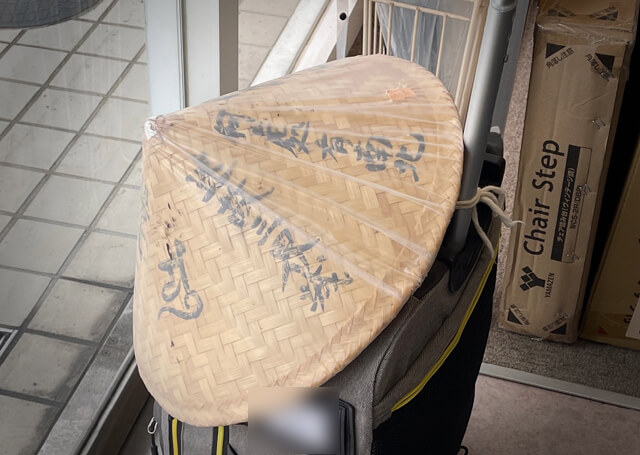
The customer embarked on a pilgrimage by foot, visiting all 88 temples of Shikoku, a journey that requires significant physical endurance and time, reflecting a deep devotion. After completing this arduous walking pilgrimage, she visited our store to request the mounting of her nōkyō-jiku.
This global exchange exemplifies the growing worldwide interest in Japan’s traditional culture and we find those interactions greatly meaningful.
The customer required a totally one-of-a-kind style regarding the mounting, not necessarily standard type.
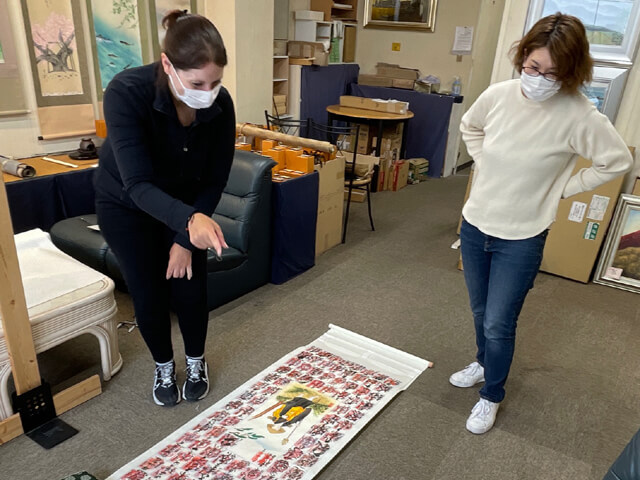
She chose a clear and pale color for the outer enclosure fabric, and a distinct green for the inner enclosure, reflecting her love for plants so that the combination blends with her interior.
In the end, a green fabric with crests of phoenixes facing each other was determined to use for naka-mawashi.
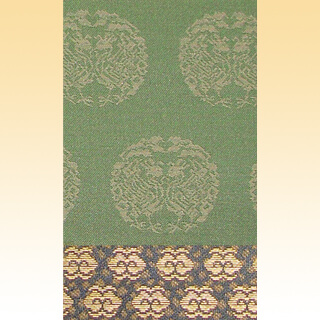
With its rich hue and interwoven patterns, the fabric caught her eyes and it was love at first sight when she set eyes on it.
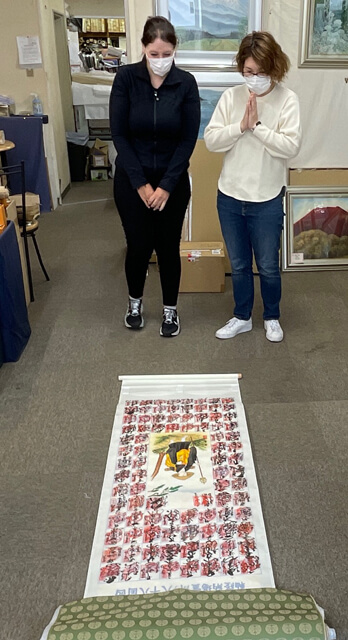
Despite our initial impression of her as tough-looking due to her being a bodybuilder, meeting her in person was a pleasantly surprising revelation of her warm gentleness, characterized by a tender smile and charming behavior.
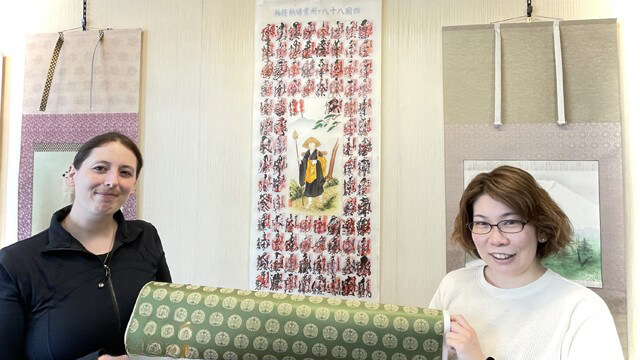
Here is the finished kakejiku. The mounting style requested was far cry from the styles meeting the common taste in Japan and that was eye opening for us throughout the process still intriguingly, the combination of fabrics has been somehow growing on us once the work was done.

This mounting request transcended mere business, becoming a valuable intercultural experience.
We do look forward to the increase in the number of customers from abroad ordering mounting work after accomplishing their pilgrimage, like the story of this edition in the current world where the covid pandemic has simmered down and the influx of inbound visitors begun to be seen.
It brings us great joy when the curiosity of Japan’s traditional culture and art are shared by people globally and making it possible to deliver them the opportunity which is deepening their interest.
We will continue to distribute the beauty of Japan to customers from all over the world while playing the role of a passage for delivering Japan’s culture.
If you would like to know more about how a Shikoku 88 pilgrimages kakejiku is produced, please kindly watch this video.

